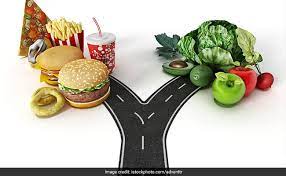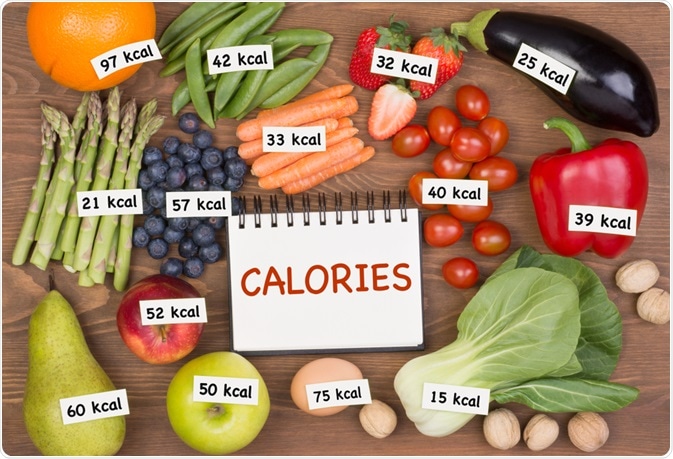A Short Calorie History…..
What is a calorie I hear you ask. We have been using calories as a dieting tool since the 1910s. A calorie, quite simply is a unit of energy. It was originally defined as the amount required to raise the temperature of 1g water by 1 degree celcius. Years ago this was worked out by burning food in water and note the temperature change! We don’t use that method now, we use a system called Atwater system or the 9-4-9. This system dictates that proteins and carbs contain 4 calories per gram, while one gram of fat contains 9 calories. This way you can work out a foods macro balance and you can calculate its calories. HOWEVER…recently experts have started to question this method saying that not all energy in foods is completely absorbed or digested and that this system is flawed. This means it can be hard for us mere mortals to accurately translate calories on labels.
Calories come from three main macronutrients: protein, carbohydrates, and fats. Everything you eat is some combination of macronutirients. They all have uses in the body in appropriate amounts, even choloesterol, which is a type of fat, and sugar, which is a carbohydrate. Each macronutrient can be used as an energy source, and technically each produces the same unit of energy per calorie. That being said…
 It’s a drastic oversimplification to say “a calorie is a calorie.”
It’s a drastic oversimplification to say “a calorie is a calorie.”
The macronutrients all have very different chemical structures and complex sets of jobs in your body. Let’s take a look at each one.
At 4 calories per gram, we generally think of carbohydrates mainly as a source of energy, and that’s pretty accurate. They’ve gotten a bad rep in the last few decades or so, but your brain lives on sufar.. Remember eating Cocoa Pops before big exams? Fine, maybe that was just me, but it actually was based on sound science. If you’re active, carbs are a great source of energy. The “problem” with carbs, which isn’t actually a problem, but rather just a question of math, is that when you’re not active, or you eat way more simple carbohydrates than your body can use for energy, it gets stored as fat. And the truth is, yeah, a lot of us eat a lot more carbs than our bodies need.
You also may have read recently that sugar is as addictive as cocaine, which sounds bad, but actually isn’t the case. While the lure of sugar can be strong for some people, current science just doesn’t seem to support that headline-friendly notion. Really, when was the last time someone sold their possessions for a cronut? A 2014 studyfrom the University of Edinburgh found that people could show addiction-type patterns around eating, but that sugar and fat themselves did not promote addictive behavior. So enjoy carbohydrates in the right amount for your activity level.
Fat has multiple uses in the body. It’s used in cell wall repair, hormone regulation, and storage of fat-soluble vitamins. An extreme lowfat diet can impede any one of these. The reason why fat gets a bad rep is that it packs 9 calories per gram, and a lot of high-fat foods are not extremely nutrient-dense. You don’t need to be scared of bacon (because bacon), but moderation is key when it comes to keeping your caloric intake from fatty foods in line with what your body needs for fuel.
And speaking of bacon, let’s talk protein, that thing we’re never quite sure if we’re getting enough of but are strangely lured in by if we see the number of grams of it on a label. Protein is responsible for a lot of the little repairs your body needs done on a daily basis and, of course, building muscle. Like carbohydrates, protein has 4 calories per gram. But unlike carbs, a huge advantage of protein is that it’s the best macronutrient for satiety, according to a meta-analysis from a 2016 study from Purdue University. A lot of people worry about getting enough protein, but all reports show that you’re getting plenty of it just by eating a varied diet. Don’t be dragged in by the labels that say “added protein” unless you’re trying to grow biceps on your biceps.
Yes, but your body can also convert protein and fat into sugar. When needed, there are pathways for each calorie source to be converted to a usable form of fuel. Conversely, every calorie source can be converted and stored as fat if you have an excess of calories in your system. Busting a related myth, you do not “convert fat into muscle” when you lose weight. You can lose fat and gain muscle simultaneously giving the impression that this happens, but fat deposits cannot be converted directly into muscles.
It really depends on your caloric needs, but in general terms foods that we consider healthy tend to have a high ratio of micronutrients (i.e., vitamins and minerals) per calorie. Vegetables, lean meats, fruits, berries, whole grains, and lentils are all examples of foods that easily meet this criteria.
There’s no morality with food or calories. The food simply is, and it’s up to you to make intelligent choices with the food and your health… and once in a while, with your taste buds, because godammit, cronuts exist. Moderation, but get the veggies first!
A lot of that comes down to personal preference. Nobody is great at tracking calories—not even registered dietitians—because we all tend to incorrectly estimate our intake. So how do we manage this? Find what works for you. Long term, there’s no advantage to a low-carb dietversus a lowfat diet for weight loss, because both work the same way: by inducing a caloric deficit. For every story like Supersize Me, there’s a guy who loses 56 pounds eating nothing but McDonald’s while meticulously counting calories. Every diet plan will work if you stick to it because, no matter what, diets work by inducing a caloric deficit. Truly, the best diet plan is one that you can stick to. (Not that sticking to a diet is an easy feat—it isn’t, and dieting can be a complicated journey. But that’s another story.)
Fruits and vegetables are mainly carbohydrate, fiber, and water. Lentils are protein and carbs. Meats are protein and fat. And processed foods, well, read the labels and find out. But there’s nothing intrinsically wrong with any of them, not even candy. They’re all just combinations of calories. If you want to enjoy something that’s a dense source of calories, enjoy it. If you’re trying to lose or maintain your weight, just keep track of it. And never let an online list tell you that there are calories—or anything—that you’re too old to enjoy!!!!

